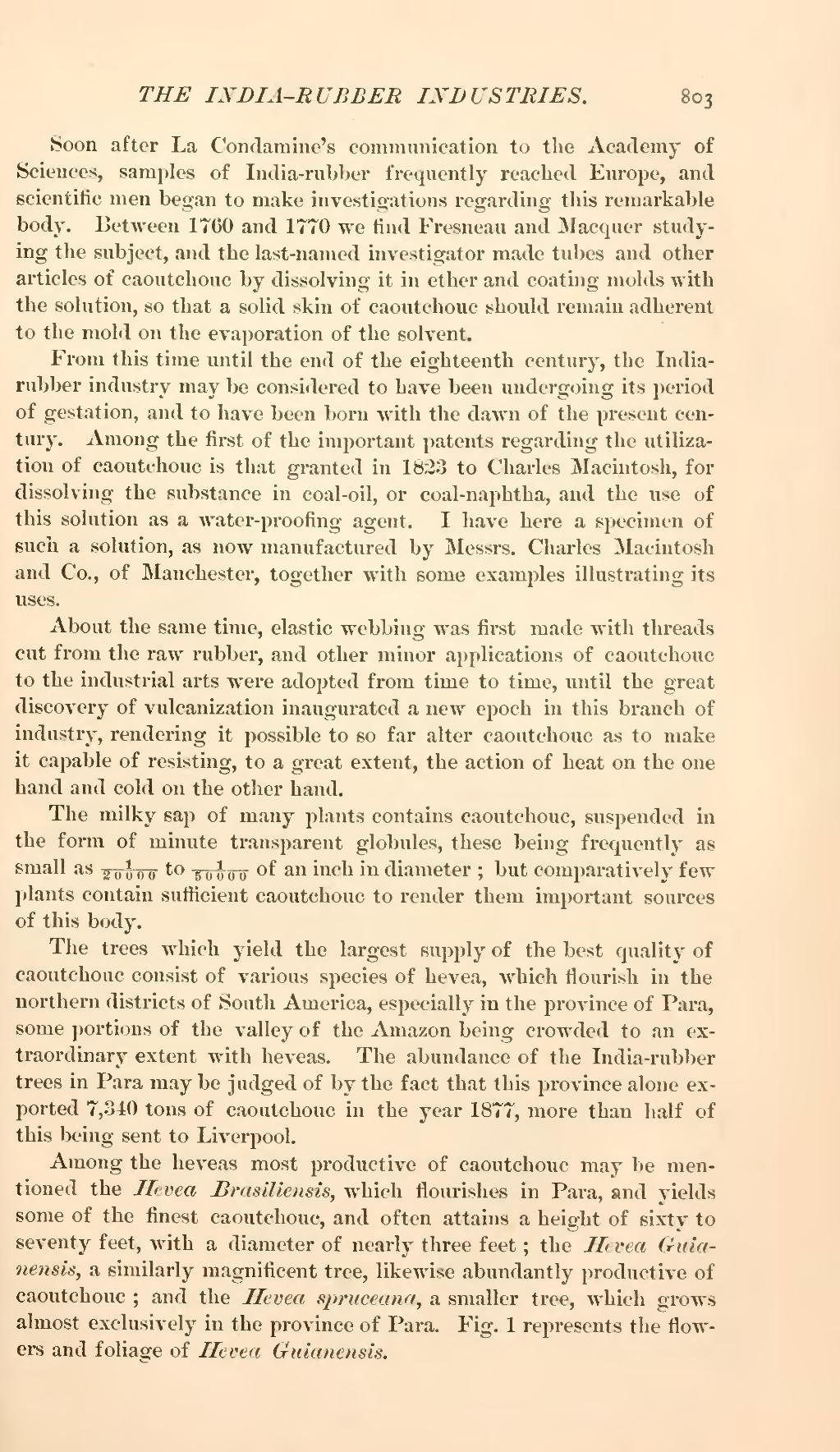Soon after La Condamine's communication to the Academy of Sciences, samples of India-rubber frequently reached Europe, and scientific men began to make investigations regarding this remarkable body. Between 1760 and 1770 we find Fresneau and Macquer studying the subject, and the last-named investigator made tubes and other articles of caoutchouc by dissolving it in ether and coating molds with the solution, so that a solid skin of caoutchouc should remain adherent to the mold on the evaporation of the solvent.
From this time until the end of the eighteenth century, the India rubber industry may be considered to have been undergoing its period of gestation, and to have been born with the dawn of the present century. Among the first of the important patents regarding the utilization of caoutchouc is that granted in 1823 to Charles Macintosh, for dissolving the substance in coal-oil, or coal-naphtha, and the use of this solution as a water-proofing agent. I have here a specimen of such a solution, as now manufactured by Messrs. Charles Macintosh and Co., of Manchester, together with some examples illustrating its uses.
About the same time, elastic webbing was first made with threads cut from the raw rubber, and other minor applications of caoutchouc to the industrial arts were adopted from time to time, until the great discovery of vulcanization inaugurated a new epoch in this branch of industry, rendering it possible to so far alter caoutchouc as to make it capable of resisting, to a great extent, the action of heat on the one hand and cold on the other hand.
The milky sap of many plants contains caoutchouc, suspended in the form of minute transparent globules, these being frequently as small as 120000 to 150000 of an inch in diameter; but comparatively few plants contain sufficient caoutchouc to render them important sources of this body.
The trees which yield the largest supply of the best quality of caoutchouc consist of various species of hevea, which flourish in the northern districts of South America, especially in the province of Para, some portions of the valley of the Amazon being crowded to an extraordinary extent with heveas. The abundance of the India-rubber trees in Para may be judged of by the fact that this province alone exported 7,340 tons of caoutchouc in the year 1877, more than half of this being sent to Liverpool.
Among the heveas most productive of caoutchouc may be mentioned the Hevea Brasiliensis, which flourishes in Para, and yields some of the finest caoutchouc, and often attains a height of sixty to seventy feet, with a diameter of nearly three feet; the Hevea Guianensis, a similarly magnificent tree, likewise abundantly productive of caoutchouc; and the Hevea spruceana, a smaller tree, which grows almost exclusively in the province of Para. Fig. 1 represents the flowers and foliage of Hevea Guianensis.
